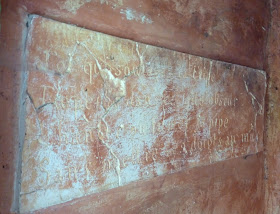Dès son enfance, il s'intéresse aux questions
inexpliquées philosophiques et religieuses et, avec
un groupe de Chercheurs de Vérité, poursuit à
travers l'Asie sa quête de sources
de connaissances traditionnelles.
Pour mettre en pratique son enseignement
il crée en 1920 à Tiflis l'Institut pour
le Développement Harmonique de l'Homme.
En 1922 il s'installe à Avon, au Prieuré des
Basses Loges (actuellement propriété privée).
Le lieu devient un centre qui attire quelques
intellectuelles parmi les plus éminents de l'époque,
en particulier des Anglais et des Américains.
Quelques années plus tard il ferme l'Insitut et
poursuit son travail à Paris et aux Etats-Unis.
L'œuvre de Gurdjieff suscite toujours recherches
et interrogations passionnées, scepticisme
ou admiration sans bornes.'
'George Ivanovitch GURDJIEFF
born in the Caucasus in 1877
died in Paris in 1949'
–––––––––––––––––
'From childhood, he was interested in unexplained
religious and philosphical matters and, with
a group of Seekers after Truth, pursued his
quest for the sources of traditional
knowledge across Asia.
To put his teaching into practice,
in 1920 in Tiflis he created the
Institute for the Hamonious Development of Man.
In 1922 he moved into the
Prieuré des Basses Loges (now private property).
The place became a centre of attention for
some of the most eminent intellectuals of the day,
English and Americans in particular.
A few years later he closed the Institute
and continued his work in Paris and the United States.
Gurdjieff's work still arouses endless enthusiastic
research and investigation, scepticism and admiration.'





















































